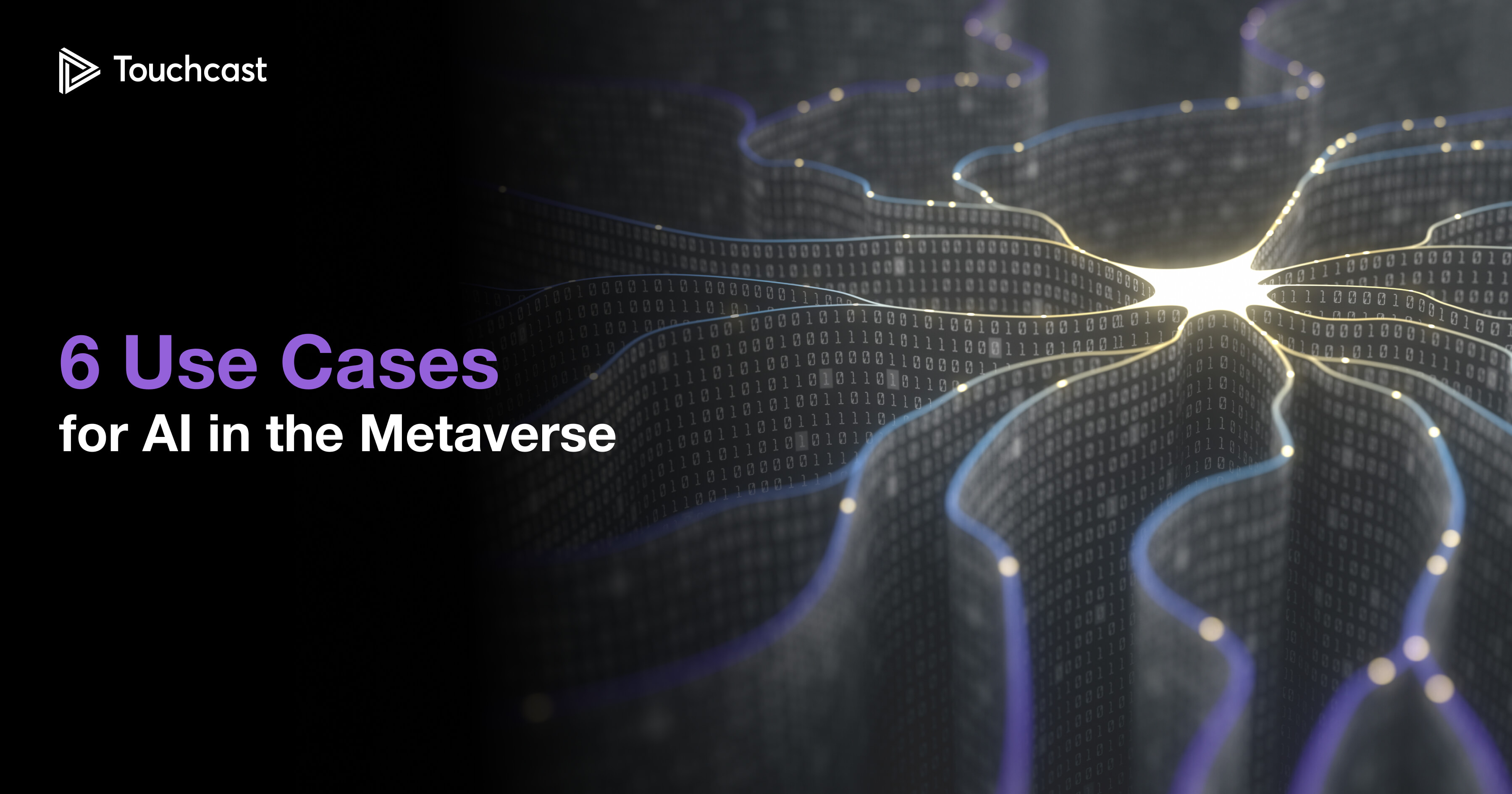While the metaverse is a fairly new concept, artificial intelligence has had a pivotal role in our everyday lives over the last decade. Widely used across most businesses and consumer-facing applications, AI is largely responsible for Apple’s Siri and Face ID, Amazon’s recommendation engine, Epic Games’ Unreal Engine, and many more behind-the-scenes processes. Chances are you interact with AI-powered devices and algorithms hundreds of times per day, without even knowing.
Now, as we head into the unchartered waters of Web3 and the metaverse, an important question remains: What is AI’s role in the metaverse?
AI and the Metaverse: 6 Use Cases
The metaverse is a collection of hyper-realistic, immersive 3D virtual worlds designed to revolutionize the way we work, shop, learn, and socialize with one another over the internet. Along with the metaverse comes massive amounts of data which we will rely heavily on AI-powered engines and devices to process. By combining powerful artificial intelligence and data processing with other emerging technologies like augmented reality, virtual reality, and the blockchain, we finally have the means to create scalable and accurate virtual worlds. Similar to Web 2.0, in many cases, we will not recognize our interactions with AI but rather fall in love with its results.
While there’s much excitement and promise around the metaverse, it is important to note that it’s in the very early stages of development and adoption. Over time the metaverse will evolve, and its success will be impossible without core subsets of AI like machine learning, natural language processing, and computer vision. Still, we are already seeing ample crossover in the following areas.
1. Accurate Avatar Creation

The creation of virtual identities is deeply rooted in the metaverse’s core tenets of interaction and connectivity. Not only can AI engines use 2D or 3D image scans to generate life-like digital avatars, but they can also emulate physical and emotional characteristics like facial expressions and body language.
Unfortunately, highly realistic deepfakes, or “fictional” AI-generated photos and videos, have already begun to flood the internet, sparking controversy and confusion among everyday users and mainstream media. As the quality of deep fakes continues to improve, a large question remains: How can we alert users to deepfakes in the metaverse, and avoid fraud and deception?
2. Metaverse Chatbots and NPCs
Unlike avatars that serve as digital representations of ourselves, digital humans act as AI-enabled non-playing characters (NPCs). Built with a combination of speech AI, computer vision, and natural language understanding, digital humans function as 3D, metaverse-native chatbots that can engage and interact with people in a virtual world. Taking the form of automated assistants, event hosts, and friendly companions, these digital humans can see, speak, and understand naturally spoken intent, allowing them to converse on a variety of subjects.
3. Natural Language Processing

Natural language processing is one of the most powerful, and widely used, consumer-facing applications of AI. Take Siri or Alexa for example. An average interaction with Siri is powered by two core subsets of NLP: Natural Language Understanding and Natural Language Generation.
When you ask Siri a question, NLU converts your native language into a machine-readable binary programming language for further AI analysis. Then, NLG generates a proper response and converts the answer back into the native language in which the question was initially asked.
NLP will be largely responsible for global communication within the metaverse, with both NLU and NLG capable of translating and generating responses for nearly any language.
4. VR World Generation at Scale
Much of the beauty of AI, specifically deep learning driven by neural networks, is an engine's ability to use historic data and machine learning reinforcement to fine-tune future outputs. This creates a self-improving flywheel capable of performing and providing results similar to, or even better than, human beings.
Companies like Nvidia, Meta, and DeepMind are already training AI models to create entire virtual worlds with little to no human input. As this technology advances, virtual worlds will be able to scale much more efficiently.
5. Human-Computer Interactions

While some metaverse worlds may exist in-browser, most are expected to be accessed through wearable consumer head-mounted displays (HMDs). Equipped with sensors and algorithms, HMDs can accurately interpret the world around us, detecting and analyzing everything from physical objects and heat to water sources, smells, stress levels, and more.
We are already starting to see examples of AI-powered sensors capable of reading and predicting neurological and muscular patterns to better learn how you’d like to move within the metaverse. When combined with natural language processing, these HMDs allow for voice-activated navigation such as picking up objects, opening doors, or following directions.
"We’ll need 1,000-times more compute capacity than we have today.” - Anton Kaplanyan, VP of Graphics Research at Intel
6. Supercomputers
With ultra-fast data processing capable of performing the most complex computing operations, supercomputers will be heavily relied upon to build the metaverse of the future. Unlike your standard gaming PC or laptop, a supercomputer is not a single device, but rather a massive collection of parallel processing units.
"We’ll need 1,000-times more compute capacity than we have today,” said Anton Kaplanyan, vice president of graphics research at Intel. There are a lot of new Intel processors being released right now to support the development of the metaverse, including CPUs, GPUs, and IPUs.
While much of the metaverse's presence in our day-to-day lives is yet to be seen, it’s nearly certain that AI will play a key role. And as the next era of the internet quickly unfolds, the last thing you want is for your business to be stuck in the past.
That’s why Touchcast is proud to offer Metaverse-as-a-service (MaaS) for the enterprise metaverse. We offer adaptive metaverse solutions for a wide range of use cases, including immersive metaverse experiences where enterprise businesses can build digital twins of their offices and retail storefronts, host events, and provide both customers and employees with unforgettable digital experiences.
To learn more about the metaverse, check out the .metaverse podcast on Apple, Spotify, or wherever you get your podcasts.



















.png)


